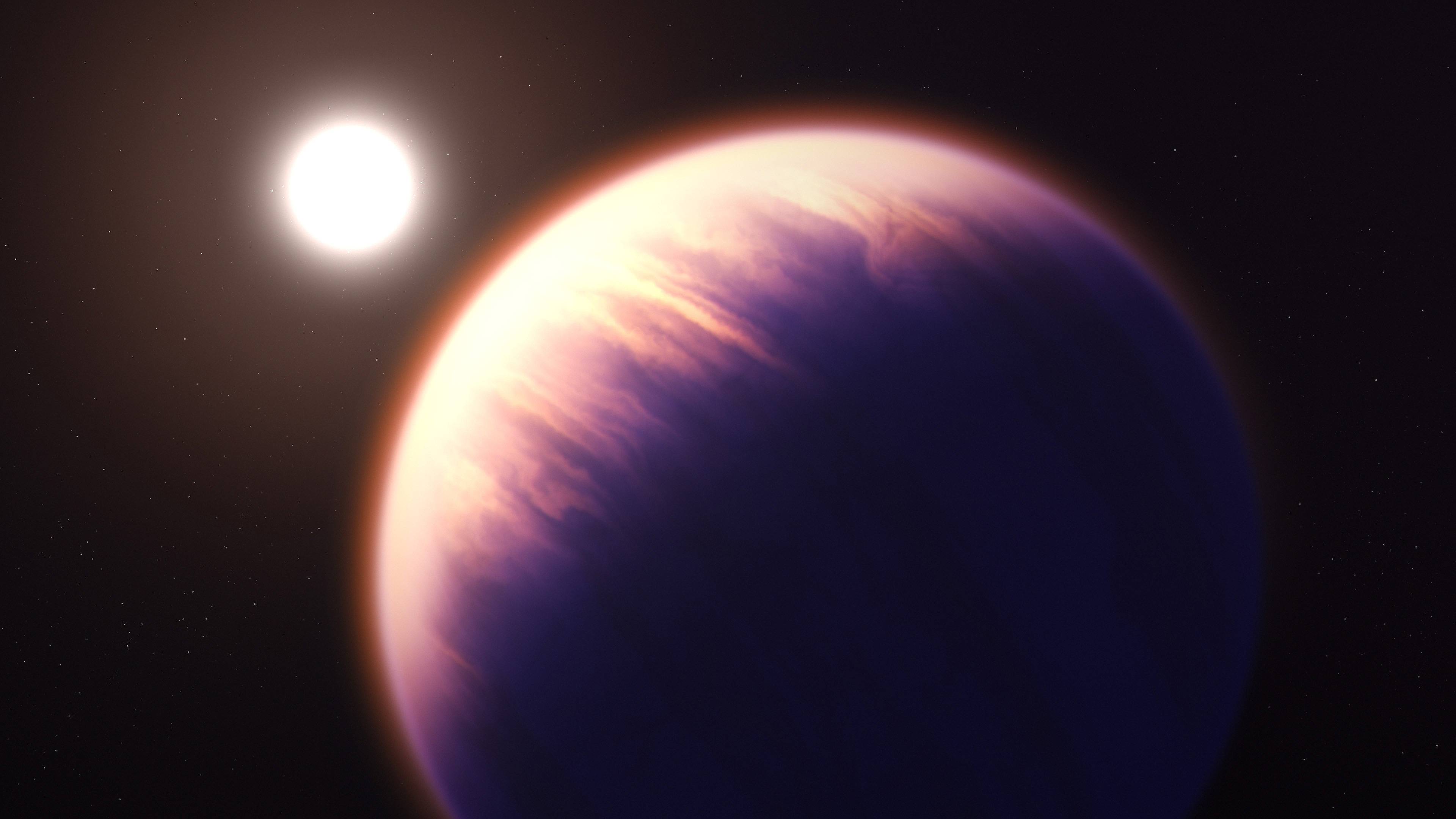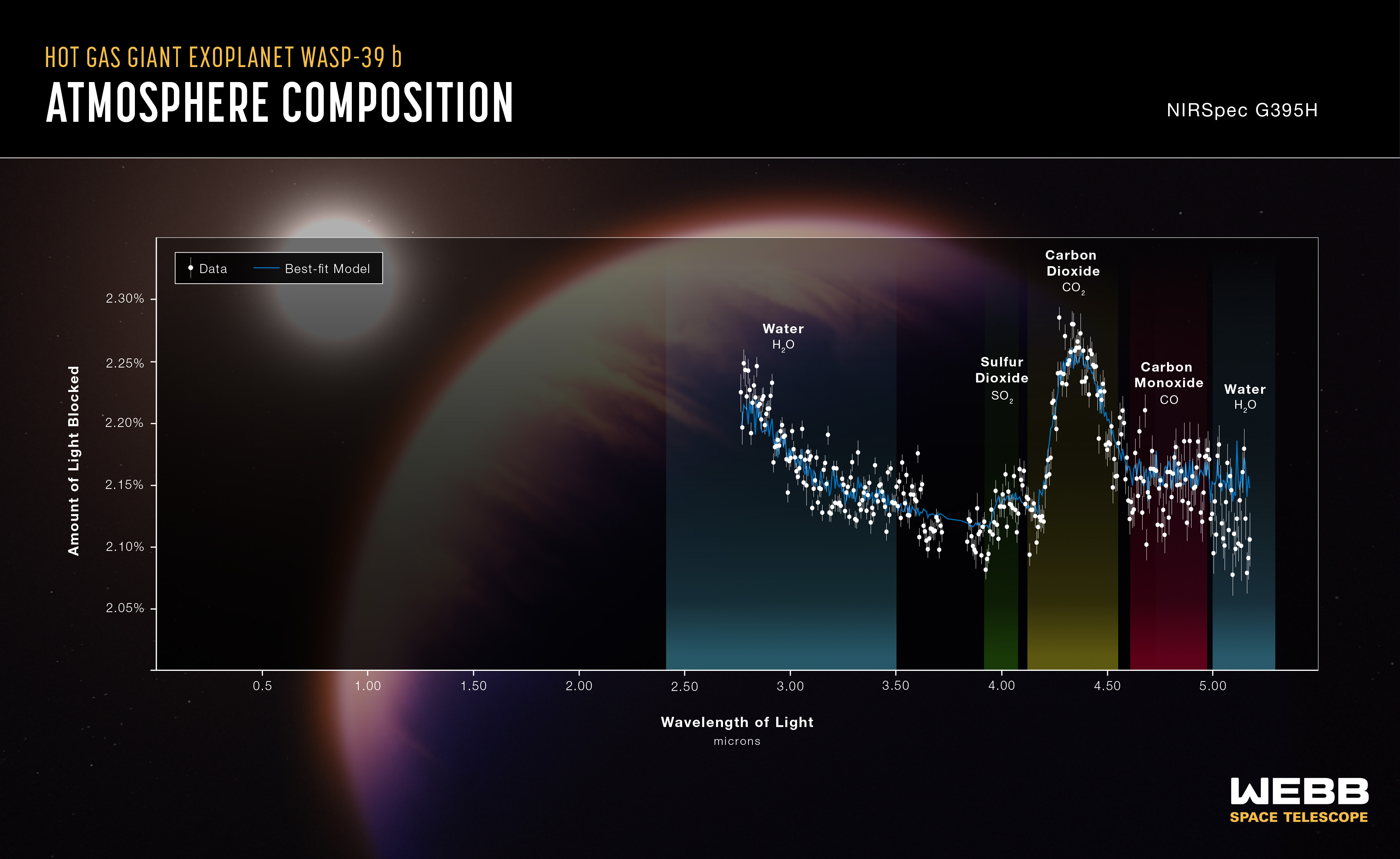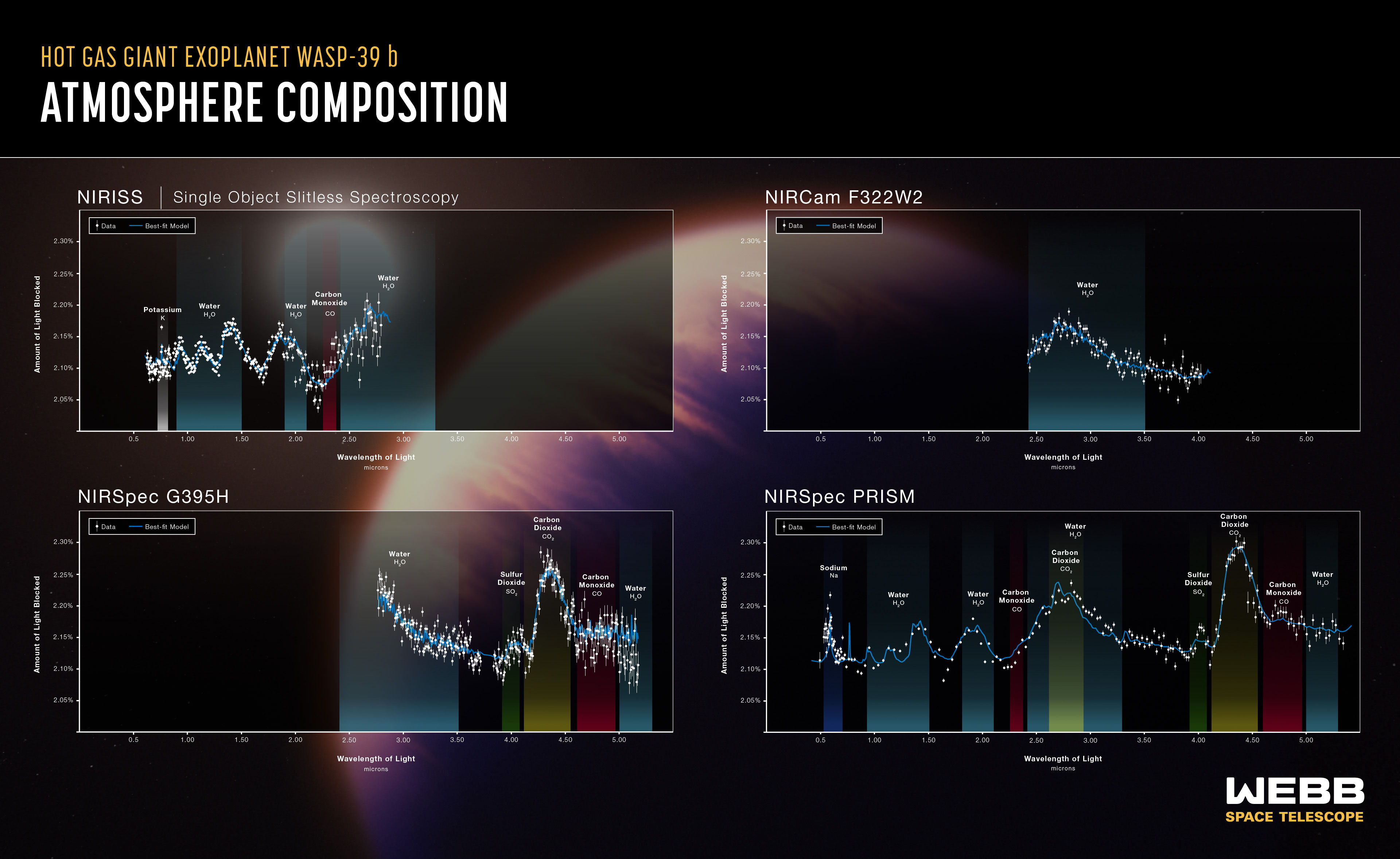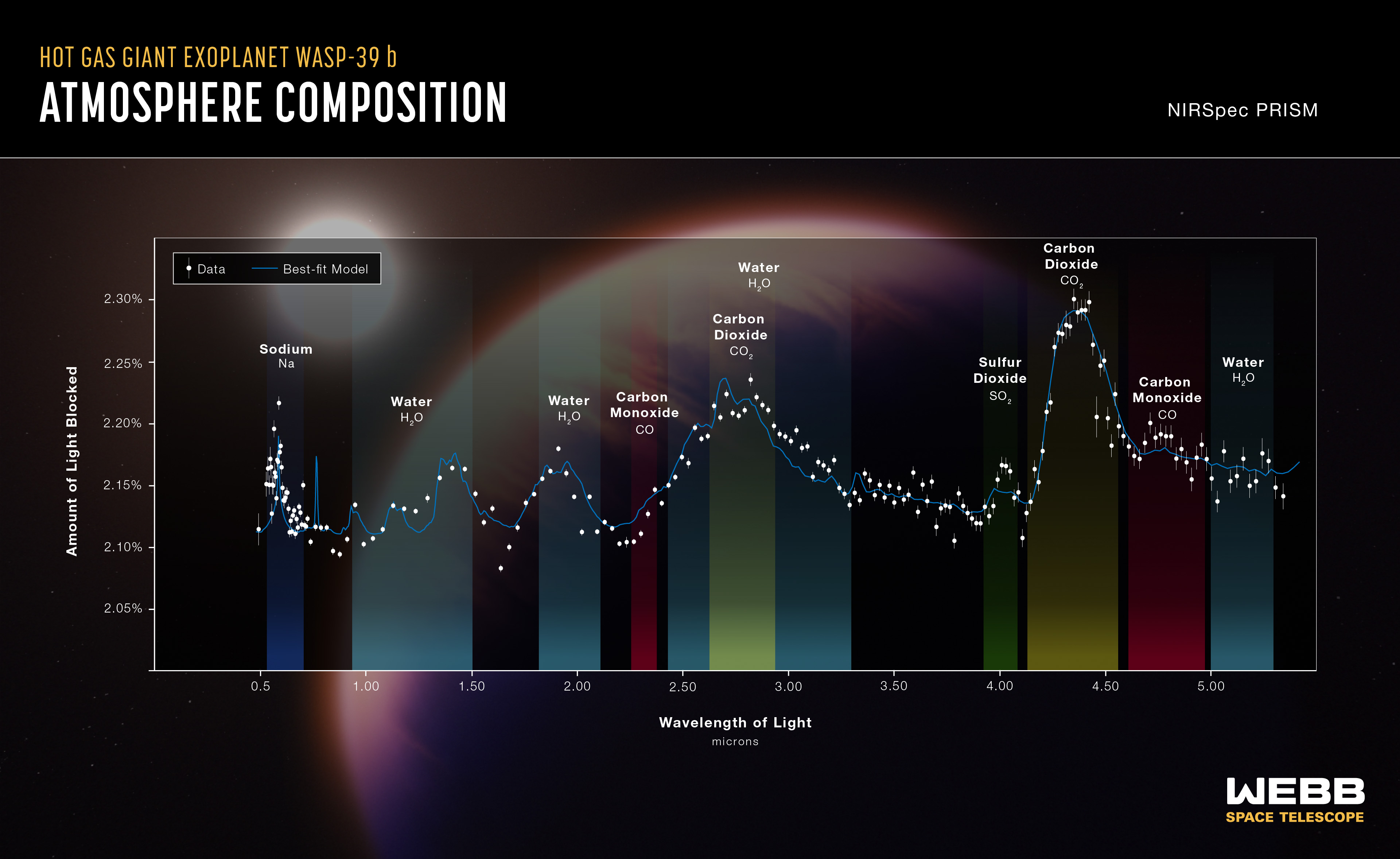James Webb Space Telescope camera data captures dreamy Exoplanet Atmosphere
NASA's James Webb Space Telescope releases another new image depicting the fiery sky and atmosphere of distant world

The James Webb Space Telescope has compiled together instrument data that collectively reveal a molecular and chemical profile of an exoplanet atmosphere, WASP-39 b (otherwise known as Bocaprins), as we've never seen before!
The WASP-39 b is said to be a planet that is unlike any other, a gas-filled behemoth and "hot-Saturn" planet that resembles the size of Saturn, and orbits its star eight times closer compared with the distance that Mercury orbits our sun.
• Best Black Friday telescope deals
The above image is actually an artist's illustration, not a digital image, but it has still been created from the combined data provided by three sensitive instruments on the James Webb Space Telescope (JWST), that include its Near-Infrared Camera (NIRCam). Together these instruments have discovered many firsts in exoplanet science, detecting sulfur dioxide for the very first time in an exoplanet's atmosphere, and therefore providing concrete evidence of photochemistry at play.
An exoplanet is a term given to a planet that resides outside of our own solar system, and this one in particular, is said to be 700 light-years away! The evidence of photochemistry is fundamental to life on Earth, and the new readings of this exoplanet WASP-39 b from Webb provide a full molecular as well as chemical profile of the planet, including fingerprints of atoms, molecules, and even signs of active chemistry and clouds. no wonder scientists are excited about these findings.
The data that has been gathered and extracted from the examination of WASP-39 b allows us to determine the atmospheric composition and constituents of the hot gas giant. Elements have been identified within the atmosphere that include water, carbon monoxide, sodium, and potassium, as well as the previously mentioned sulfur dioxide. According to NASA, understanding the ratio of these elements is how scientists determine how the planet was originally formed.
• These are the best telescopes for astrophotography
The best camera deals, reviews, product advice, and unmissable photography news, direct to your inbox!
The JWST initially studied this WASP-39 b exoplanet back in August, one of the first to be examined once operations had commenced, and Webb's instruments provided the first clear evidence of carbon dioxide being present within an exoplanet. The way that we learn about a planet's atmosphere involves breaking its varying light into separate components and creating spectra.
To perceive the light from WASP-39 b, Webb had to track the planet as it passed in front of its orbit star, which allowed for some of the star’s light to be filtered through the planet’s atmosphere. Different chemicals in an atmosphere are said to absorb different colors of starlight spectrum, which means that any missing colors in the data can inform scientists and astronomers of which molecules are present.
The image above is a graphic created by NASA that shows four transmission spectra from three of Webb’s instruments, operating in four instrument modes. All of these spectra are plotted on a common scale extending from 0.5 to 5.5 microns.
Each of the data points (white circles) on the graphs represents the specific wavelength of light that has been/ is being blocked by the planet and absorbed by its atmosphere, appearing as peaks in the transmission spectrum.
“Data like these are a game changer.” Shares astronomer Natalie Batalha, contributing to new research from the University of California, Santa Cruz. "We observed the exoplanet with multiple instruments that, together, provide a broad swath of the infrared spectrum and a panoply of chemical fingerprints inaccessible until [this mission].”
Laura Flagg, a researcher at Cornell University, shared: "We are going to be able to see the big picture of exoplanet atmospheres,” she continues, “It is incredibly exciting to know that everything is going to be rewritten. That is one of the best parts of being a scientist.”
• We recently reported on the image of a fiery space hourglass captured by the Webb, as well as a Cosmic Tarantula image, and the absolutely mesmerizing Pillars of Creation image.
If you want to keep up with the latest image releases, head to the James Webb Space Telescope gallery, where you can see all of Webb's first images and learn more about what they depict. NASA will be launching new images at least every other week.
• You may also be interested in the best deep-space telescopes, and don't forget the best lenses for astrophotography.

Beth kicked off her journalistic career as a staff writer here at Digital Camera World, but has since moved over to our sister site Creative Bloq, where she covers all things tech, gaming, photography, and 3D printing. With a degree in Music Journalism and a Master's degree in Photography, Beth knows a thing or two about cameras – and you'll most likely find her photographing local gigs under the alias Bethshootsbands. She also dabbles in cosplay photography, bringing comic book fantasies to life, and uses a Canon 5DS and Sony A7III as her go-to setup.



